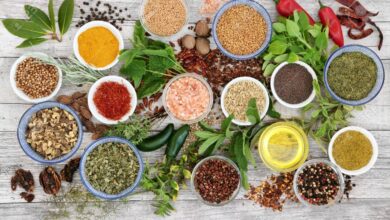Welcome to the wonderful world of red wine tasting! Whether you’re a wine enthusiast or just beginning your journey, this is for you. Comparing wines during a tasting session can be an exciting and enlightening experience.
Each variety offers distinct flavors and characteristics, making the tasting process both enjoyable and educational. In this blog, we will focus on the essential factors to consider when comparing. By understanding these factors, you’ll be able to discern the subtle nuances and make the most of your experience.
Color and Clarity
The first factor to assess when you’re in wine-tasting events is their color and clarity. Hold your wine glass against a white background and observe the wine’s hue. Red wines can range from light ruby to deep garnet or purple.
A younger wine often has a brighter color, while older wines tend to display a more brick-red or tawny hue. Additionally, check for clarity by examining whether the wine is clear or cloudy, which can indicate its quality and aging process.
Aromas and Bouquets
Now, let’s delve into aromas and bouquets. Gently swirling the wine in your glass will release a symphony of scents. Bring the glass to your nose and take a deep sniff to experience the plethora of aromas.
You may detect fruity notes like luscious berries, juicy cherries, or ripe plums. Some wines might surprise you with complex scents like exotic spices, hints of leather, or earthiness. Each variety has its unique bouquet, influenced by factors like the:
- Grape Variety
- Winemaking techniques
- The region where it was produced
For a deeper understanding of a specific variety, consider exploring our dedicated blog on Syrah wine. Syrah, also known as Shiraz in some regions, is a popular red wine known for its bold and spicy flavors.
If you want to know about its origins, characteristics, and food pairings with this wine, click to read more about Syrah wine here.
Palate Sensations
The next crucial step is experiencing the palate sensations. Take a small sip of the wine and let it spread across your mouth. Pay attention to the different taste elements, including sweetness, acidity, tannins, and any lingering aftertaste.
Some wines may have a pronounced sweetness, while others might exhibit higher acidity or bold tannins. These elements contribute to the wine’s overall balance and complexity.
Flavor Profiles
Each red wine variety offers a diverse range of flavor profiles that excite the taste buds. As you taste different wines side by side, take note of their unique flavors. Some are known for their fruit-forward character, with dominant notes of ripe berries or cherries.
Others may display more savory flavors, such as spices, herbs, or even smoky undertones. Pay attention to how these flavors evolve on your palate and how they complement or contrast with each other.
Finish and Length
The finish, also known as the aftertaste, is another essential factor to consider when comparing wines. A long and lingering finish is often a sign of high-quality wine.
Take note of how the flavors persist on your palate after you’ve swallowed the wine. A wine with a satisfying and lingering finish is likely to leave a lasting impression.
Enjoying Your Wine Tasting
Wine tasting is an enriching journey that allows you to explore the diverse world of wine. By focusing on the factors we have shared, you’ll develop a deeper appreciation for the uniqueness of each wine variety.
So, gather some friends, open a few bottles of wine, and embark on an enjoyable and educational wine-tasting adventure.
If you think this article is helpful, check out our other blogs!





